- Understanding the care requirements for Gynura
- Light
- Temperature
- Watering
- Fertilization
- Humidity
- Pruning
- Propagation
- Pest Control
- Choosing the right type of Gynura for your space
- Consider the available space:
- Determine the lighting conditions:
- Consider your skill level:
- Research the care requirements:
- Consider the aesthetic appeal:
- Popular Gynura Varieties to Consider
- 1. Gynura aurantiaca
- 2. Gynura sarmentosa
- 3. Gynura procumbens
- 4. Gynura bicolor
- 5. Gynura crepioides
- Best practices for watering and fertilizing Gynura
- Watering
- Fertilizing
- Common pests and diseases that affect Gynura
- Pests:
- Diseases:
- Propagation techniques for Gynura
- Tips for displaying and styling Gynura in your home
- 1. Choose a suitable location
- 2. Use a well-draining potting mix
- 3. Water carefully
- 4. Consider humidity levels
- 5. Prune regularly
- 6. Display creatively
- 7. Keep away from pets
- 8. Rotate the plant
- 9. Clean the leaves
- 10. Temperature considerations
- Q&A:
- What is Gynura?
- What are some popular varieties of Gynura?
- How do I care for Gynura plants?
- Can I grow Gynura indoors?
- Are Gynura plants easy to propagate?
- Are Gynura plants safe for pets?
- Video: 5 Tips to Grow Lots of Blueberries
Gynura is a genus of flowering plants that are known for their vibrant foliage and interesting growth habits. These plants are native to tropical regions and are widely cultivated for their ornamental value. Gynura plants are often chosen for their unique and colorful leaves, which can range from bright green to deep purple. They are popular choices for indoor gardens and are commonly used in hanging baskets or as trailing plants.
When it comes to caring for Gynura plants, there are a few essential tips to keep in mind. These plants thrive in bright, indirect light, making them ideal for placement near a sunny window. They prefer well-draining soil and should be watered thoroughly but allowed to dry out slightly between waterings. It’s important to avoid overwatering, as this can lead to root rot. Gynura plants also benefit from regular fertilization during the growing season to promote healthy growth.
There are several different types of Gynura plants to choose from, each with its own unique characteristics. One popular variety is Gynura aurantiaca, also known as the velvet plant or purple passion vine. This plant features velvety purple leaves and produces small, orange flowers. Another popular variety is Gynura sarmentosa, commonly known as the creeping inch plant. This plant has long trailing stems with glossy, green leaves that are tinged with purple. Both of these varieties are great choices for adding a pop of color to your indoor garden.
In conclusion, Gynura plants are a great choice for any plant lover looking to add some color and interest to their indoor garden. With their vibrant foliage and unique growth habits, these plants are sure to make a statement. By following a few essential care tips and choosing the right variety for your space, you can enjoy the beauty of Gynura plants year-round.
Understanding the care requirements for Gynura
Gynura plants, also known as velvet plants, are tropical plants that require specific care to thrive. By understanding their care requirements, you can ensure that your Gynura plants remain healthy and vibrant.
Light
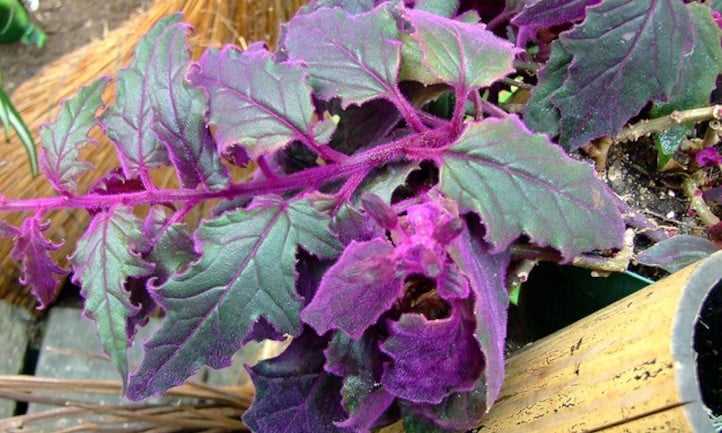
Gynura plants prefer bright, indirect light. They can tolerate some direct sunlight but too much can scorch their leaves. Place them in a location with filtered sunlight or provide artificial light if needed.
Temperature
Gynura plants thrive in warm temperatures between 65-75°F (18-24°C). They are sensitive to cold drafts, so keep them away from windows and doors during winter months.
Watering

Gynura plants like consistently moist soil. Water them when the top inch of soil feels dry. Avoid overwatering as it can lead to root rot. Ensure good drainage to prevent the plant from sitting in water.
Fertilization
Feed Gynura plants with a balanced liquid fertilizer once a month during their active growing season (spring and summer). Follow the instructions on the fertilizer packaging for proper dilution and application.
Humidity
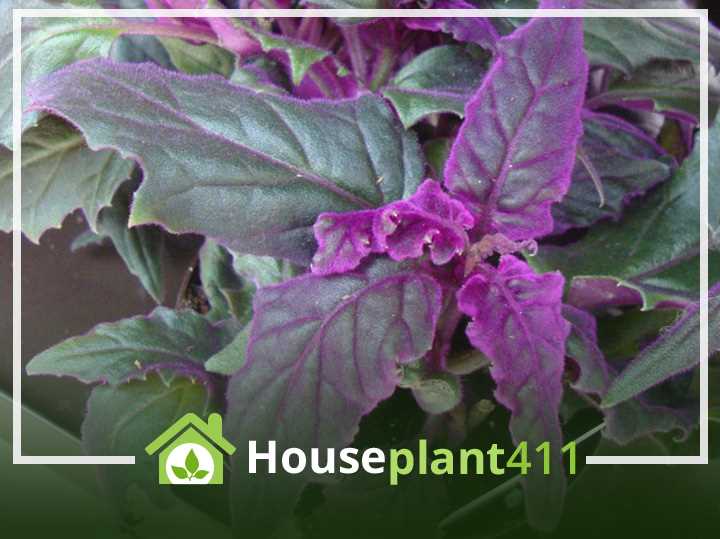
Gynura plants appreciate high humidity. You can increase humidity by misting the plant regularly, placing it on a pebble tray filled with water, or using a humidifier.
Pruning
Regular pruning helps maintain the shape and size of Gynura plants. Remove any dead or yellowing leaves and pinch off leggy stems to encourage bushier growth. Pruning can also be done to control the size of the plant.
Propagation
Gynura plants can be propagated through stem tip cuttings. Take a 4-6 inch cutting with at least two leaf nodes and place it in moist soil or water until roots develop. Once rooted, transplant the cutting into a pot with well-draining soil.
Pest Control
Gynura plants are generally resistant to pests, but they can occasionally be attacked by mealybugs or aphids. Regularly inspect the plant for any signs of pests and treat them promptly with organic insecticidal soap or neem oil.
By providing the right conditions and care for your Gynura plants, you can enjoy their beautiful foliage and unique texture in your home or garden.
Choosing the right type of Gynura for your space
Gynura plants are known for their vibrant foliage and unique growth habits. When choosing a Gynura for your space, there are several factors to consider, including the type of Gynura, the space available, and the care requirements of the plant. Here are some tips to help you make the right choice:
Consider the available space:
Before selecting a Gynura plant, assess the space where you plan to keep it. Gynuras come in a variety of sizes, ranging from compact varieties suitable for small shelves or windowsills, to larger varieties that require more floor space. Take measurements and consider the height and width of the plant at maturity to ensure it will fit comfortably in the designated space.
Determine the lighting conditions:
Gynuras thrive in bright, indirect light. While most varieties can tolerate some shade, they generally require at least a few hours of sunlight each day. Consider the amount of natural light your space receives and choose a Gynura variety that matches those conditions. If you have limited access to natural light, look for varieties that are labeled as low-light tolerant or consider supplementing with artificial grow lights.
Consider your skill level:
Gynuras are generally easy to care for, but some varieties may require slightly more attention than others. If you’re a beginner or have limited time to devote to plant care, consider selecting a Gynura variety that is known for its low-maintenance requirements. On the other hand, if you enjoy the challenge of more demanding plants or have experience caring for sensitive species, you may opt for a more finicky Gynura variety.
Research the care requirements:
Each Gynura variety has specific care requirements, including watering frequency, humidity levels, and fertilization needs. Before purchasing a Gynura, do some research to ensure you can provide the necessary conditions for your chosen variety. Consider factors such as the plant’s preferred soil type, watering schedule, and temperature preferences. This will help you determine if the plant is compatible with your current care routine and environment.
Consider the aesthetic appeal:
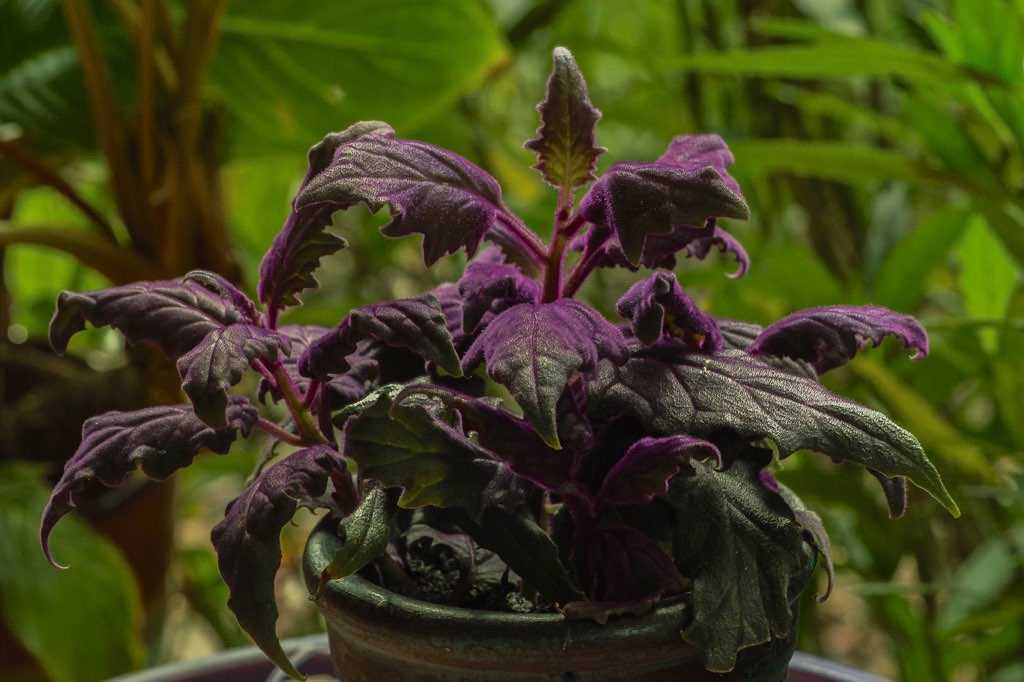
Gynuras come in various foliage colors and leaf shapes, ranging from dark greens to vibrant purples and oranges. Some varieties have serrated leaves, while others have smooth or ruffled edges. Consider your personal preferences and the overall aesthetic of your space when selecting a Gynura variety. Choose a plant that complements the existing decor and brings visual interest to the area.
By considering these factors and doing some research, you can select the right type of Gynura for your space and ensure that it thrives in its new environment.
Popular Gynura Varieties to Consider
There are several popular varieties of Gynura that you may want to consider adding to your collection. These varieties are known for their unique characteristics and may have different care requirements.
1. Gynura aurantiaca
The Gynura aurantiaca, also known as Velvet Plant or Purple Passion Vine, is one of the most popular varieties. It has dark green leaves with purple hairs that give it a velvety texture. This variety thrives in bright indirect light and needs regular watering.
2. Gynura sarmentosa
The Gynura sarmentosa, commonly known as the Purple Velvet Plant or Inch Plant, is another popular variety. Its leaves are deep green with purple undersides and fuzzy texture. It can tolerate lower light conditions but prefers bright indirect light. It requires well-draining soil and regular watering.
3. Gynura procumbens
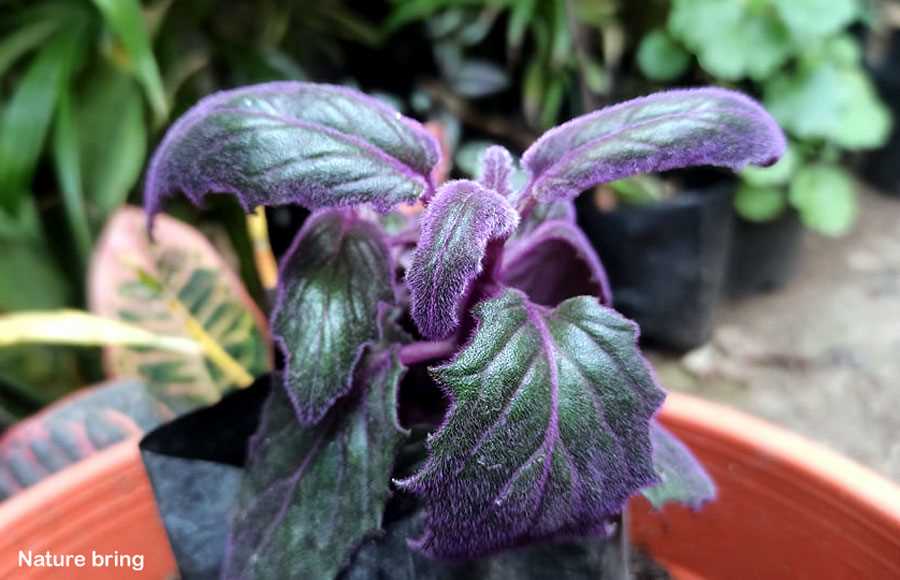
The Gynura procumbens, also called Longevity Spinach or Okinawan Spinach, is known for its edible leaves and medicinal properties. It has green leaves with purple undersides and a trailing habit. This variety prefers partial shade and regular watering.
4. Gynura bicolor
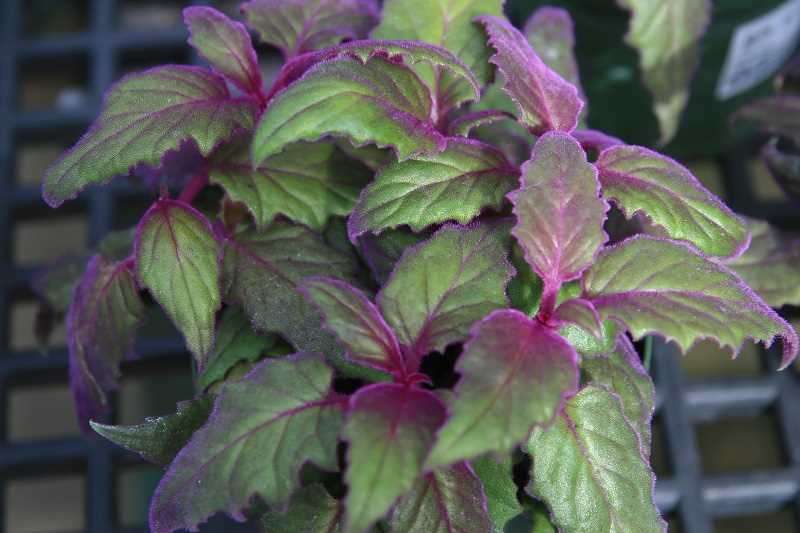
The Gynura bicolor, commonly known as Variegated Velvet Plant, is an eye-catching variety. Its leaves have a combination of deep green and white coloration, which adds a touch of uniqueness to any collection. It requires bright indirect light and regular watering.
5. Gynura crepioides
The Gynura crepioides, also known as Velvet Plant or Lettuce Plant, is a unique variety with wavy-edged leaves that resemble lettuce. Its leaves are dark green with purple underneath and have a velvety texture. It thrives in bright indirect light and needs regular watering.
These are just a few popular Gynura varieties to consider. Each variety has its own unique characteristics and care requirements, so make sure to research and choose the one that fits best with your gardening needs and preferences.
Best practices for watering and fertilizing Gynura
Gynura plants require regular watering and fertilizing to thrive and maintain their vibrant foliage. Here are some best practices for watering and fertilizing your Gynura:
Watering
- Water your Gynura when the top inch of soil feels dry to the touch. Avoid overwatering as it can lead to root rot.
- Use room temperature water to avoid shocking the plant’s roots.
- Water the soil directly and avoid getting water on the leaves to prevent fungal diseases.
- Ensure proper drainage by using a well-draining potting mix and a pot with drainage holes.
- During summer or hot weather, you may need to increase the frequency of watering to keep the soil evenly moist.
Fertilizing
- Fertilize your Gynura every 2-4 weeks during the growing season (spring and summer).
- Use a balanced, water-soluble fertilizer with a ratio such as 10-10-10 or 20-20-20.
- Follow the instructions provided on the fertilizer packaging for proper dilution and application.
- Alternatively, you can use a slow-release fertilizer according to the package instructions.
- Avoid overfertilizing, as it can lead to fertilizer burn and damage the plant.
By following these best practices for watering and fertilizing, you can help your Gynura plants thrive and display their beautiful foliage.
Common pests and diseases that affect Gynura
Gynura plants are generally hardy and resistant to most common pests and diseases. However, there are a few issues that gardeners may encounter when growing Gynura plants. Here are some of the most common pests and diseases that can affect Gynura:
Pests:
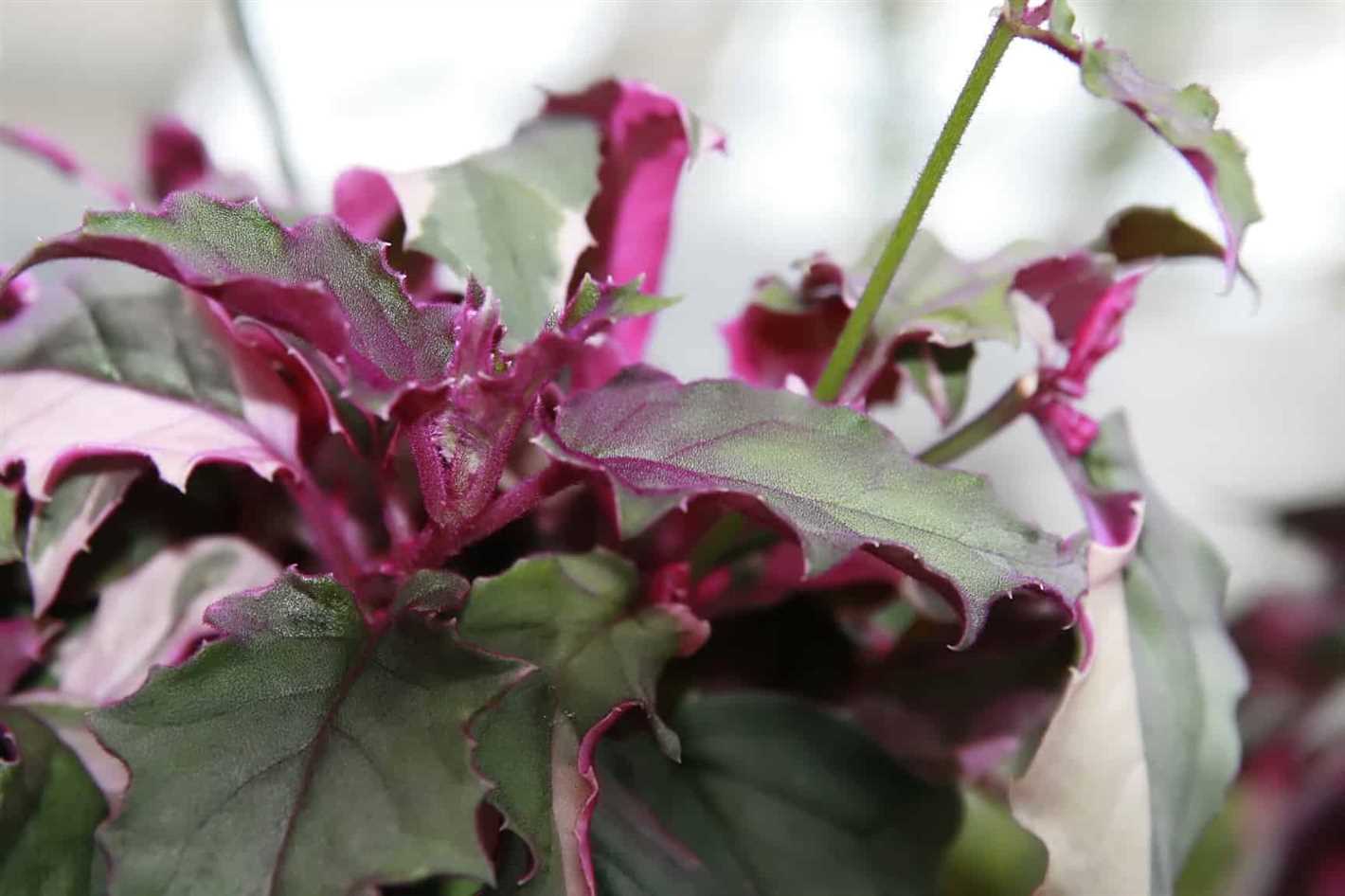
- Aphids: These small, soft-bodied insects can suck the sap from Gynura leaves, causing them to curl and wilt. They can be controlled by using insecticidal soap or by spraying a mixture of water and neem oil on the affected plants.
- Spider mites: These tiny pests can cause yellow spots and webbing on the leaves. Regularly misting the Gynura plant can help prevent spider mite infestations. If infestation occurs, use insecticidal soap or neem oil to control them.
- Mealybugs: These small, white, cottony insects can be found on the leaves and stems of Gynura plants. Removing them manually or using insecticidal soap can effectively control mealybug infestations.
Diseases:
- Root rot: Overwatering or poorly drained soil can lead to root rot in Gynura plants. To prevent this disease, ensure that the soil is well-draining and allow the top inch of soil to dry out before watering again. If root rot occurs, remove affected parts of the plant and repot in fresh soil.
- Leaf spot: Leaf spot is characterized by brown or black spots on the leaves of Gynura plants. This fungal disease can be controlled by removing affected leaves and avoiding overhead watering. Fungicides can also be used to treat severe leaf spot infections.
By being proactive in monitoring and addressing these pests and diseases, you can maintain healthy and thriving Gynura plants in your garden.
Propagation techniques for Gynura
Gynura plants can be propagated in several ways, including:
- Seeds: Gynura plants can be grown from seeds. To propagate using seeds, collect mature seeds from the parent plant and sow them in well-draining soil. Keep the soil moist and place the container in a warm and well-lit area. Germination can take a few weeks. Once the seedlings have grown, they can be transferred to individual pots.
- Stem cuttings: Propagating Gynura using stem cuttings is a popular method. Select a healthy stem of the parent plant and make a clean cut just below a node. Remove the lower leaves, leaving only a few at the top. Dip the cut end in rooting hormone and plant it in a well-draining potting mix. Keep the soil moist and place the cutting in a warm, bright spot. In a few weeks, roots should develop, and the cutting can be transferred to a larger pot.
- Division: Gynura plants can also be propagated through division. Carefully remove the plant from its pot and separate the root system into smaller sections, ensuring that each section has adequate roots and foliage. Plant the divided sections in individual pots filled with well-draining soil. Water thoroughly and provide proper care until the plants establish roots.
Regardless of the propagation method chosen, it is important to provide the newly propagated Gynura plants with adequate moisture, light, and nutrients to ensure their healthy growth and development.
Tips for displaying and styling Gynura in your home
1. Choose a suitable location
Gynura plants thrive in bright, indirect light, so it is best to place them near a window that receives filtered sunlight. Avoid placing them in direct sunlight, as it can scorch the leaves. Consider the natural lighting conditions in your home and select a spot that provides the right amount of light for your Gynura plant.
2. Use a well-draining potting mix
Gynura plants prefer well-draining soil to prevent root rot. When potting your Gynura plant, choose a potting mix that is specifically formulated for houseplants. You can also add perlite or sand to the soil mix to enhance drainage.
3. Water carefully
It is important to water your Gynura plant correctly to avoid overwatering or underwatering. The soil should be kept evenly moist, but not soggy. Water the plant when the top inch of soil feels dry to the touch. Make sure the pot has drainage holes to allow excess water to escape.
4. Consider humidity levels
Gynura plants thrive in humidity. To increase humidity levels around your plant, you can place a tray filled with water near the plant or use a room humidifier. Mist the leaves occasionally with water to provide additional moisture.
5. Prune regularly
To keep your Gynura plant looking neat and compact, prune it regularly. Pinch off the tips of the growing stems to encourage branching and bushier growth. Remove any yellow or wilted leaves to maintain the plant’s overall health and appearance.
6. Display creatively
Gynura plants have attractive leaves that can be a focal point in your home decor. Consider displaying them in unique planters or hanging baskets to showcase their trailing growth habit. You can also mix different Gynura varieties together for a visually striking display.
7. Keep away from pets
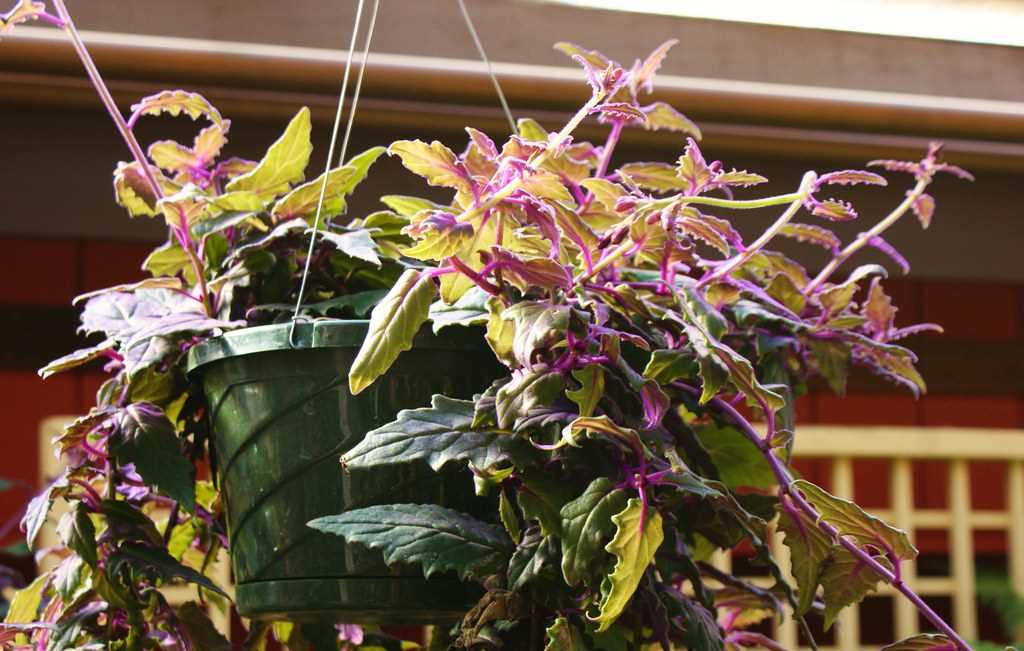
Gynura plants are toxic to cats and dogs if ingested, so it is important to keep them out of reach of pets. If you have pets in your home, consider placing your Gynura plant in a location where they cannot access it.
8. Rotate the plant
To ensure balanced growth, rotate your Gynura plant every few weeks. This will prevent the plant from leaning towards the light source and promote even growth on all sides.
9. Clean the leaves
Gynura plants have velvety leaves that can attract dust. Wipe the leaves gently with a damp cloth or use a soft brush to remove any dust buildup. This will not only keep the plant looking clean but also ensure that the leaves can effectively photosynthesize.
10. Temperature considerations
Gynura plants prefer temperatures between 65°F and 75°F (18°C to 24°C). Avoid exposing them to cold drafts or extreme temperature fluctuations. Keep the plant away from air conditioning vents or heaters that can affect its growth and overall health.
Q&A:
What is Gynura?
Gynura is a genus of flowering plants in the Asteraceae family. It is commonly known as velvet plant or velvetleaf due to its soft, velvety leaves.
What are some popular varieties of Gynura?
Some popular varieties of Gynura include Gynura aurantiaca, also known as purple passion vine, and Gynura sarmentosa, known as creeping velvet.
How do I care for Gynura plants?
Gynura plants thrive in bright, indirect light and well-draining soil. They enjoy regular watering, but it’s important to let the soil dry out slightly between waterings. They also benefit from occasional misting to increase humidity.
Can I grow Gynura indoors?
Yes, Gynura plants can be grown indoors as they tolerate lower light levels. Just make sure to place them in a well-lit spot away from direct sunlight.
Are Gynura plants easy to propagate?
Yes, Gynura plants are relatively easy to propagate. They can be propagated from stem cuttings or by dividing the rootball. Propagation is best done in the spring or early summer.
Are Gynura plants safe for pets?
Gynura plants are generally considered non-toxic to pets. However, it’s always a good idea to monitor your pets around plants and consult with a veterinarian if you have any concerns.
Video:
5 Tips to Grow Lots of Blueberries







